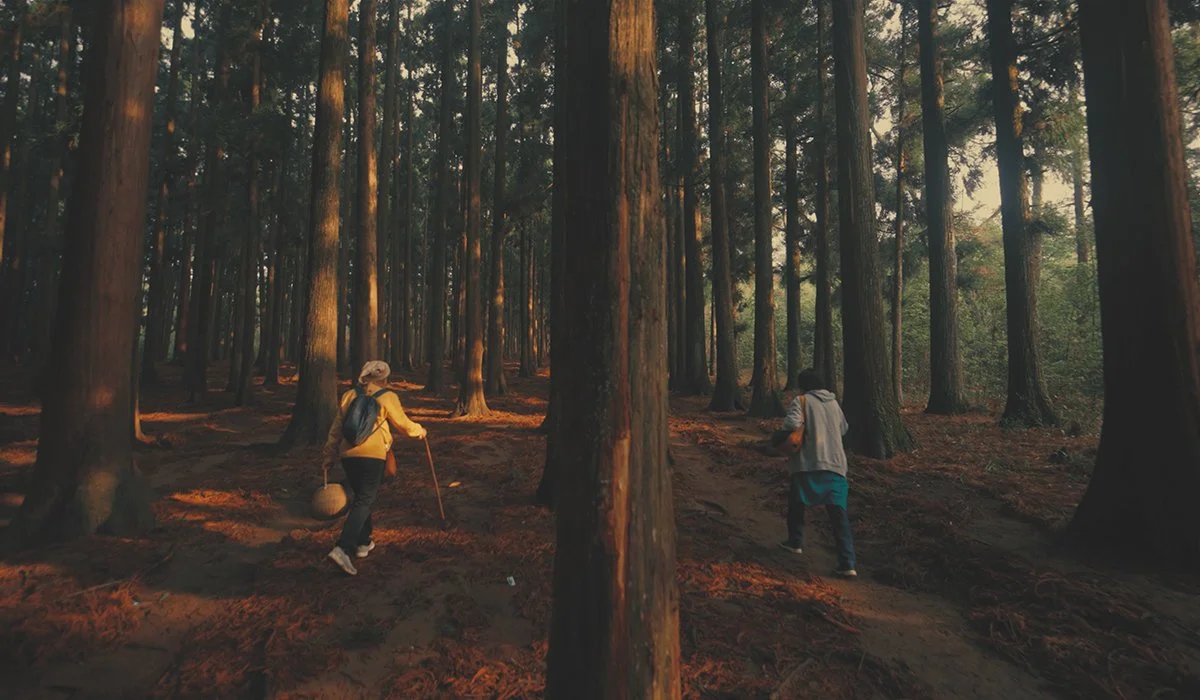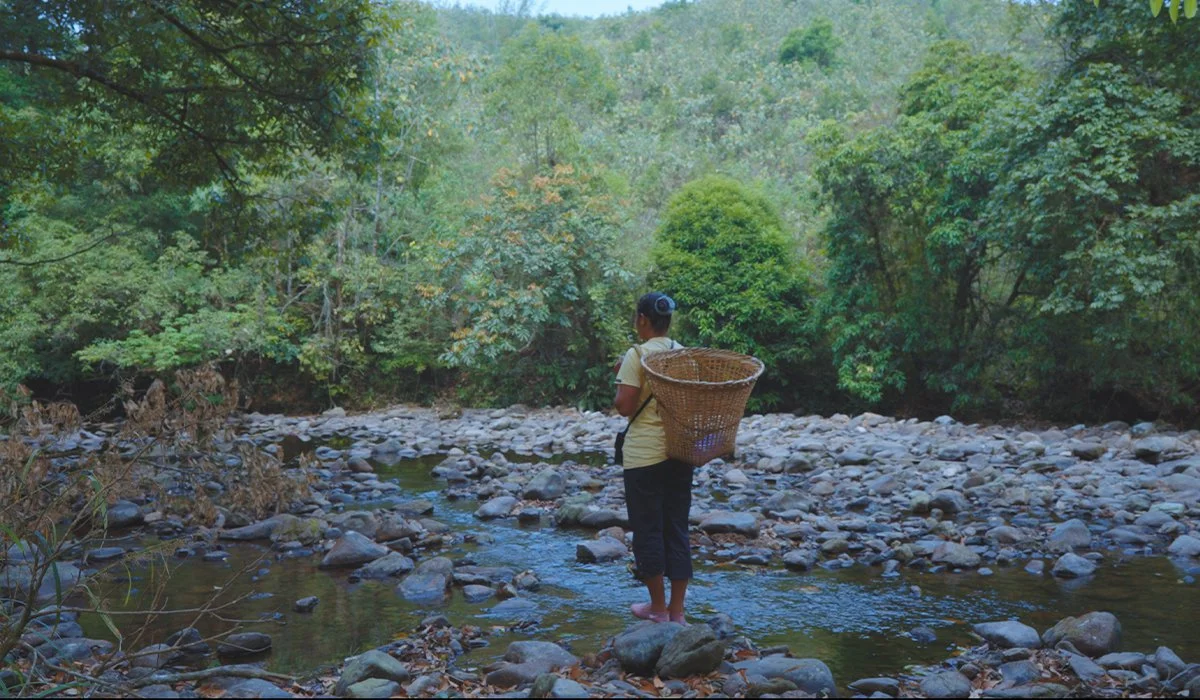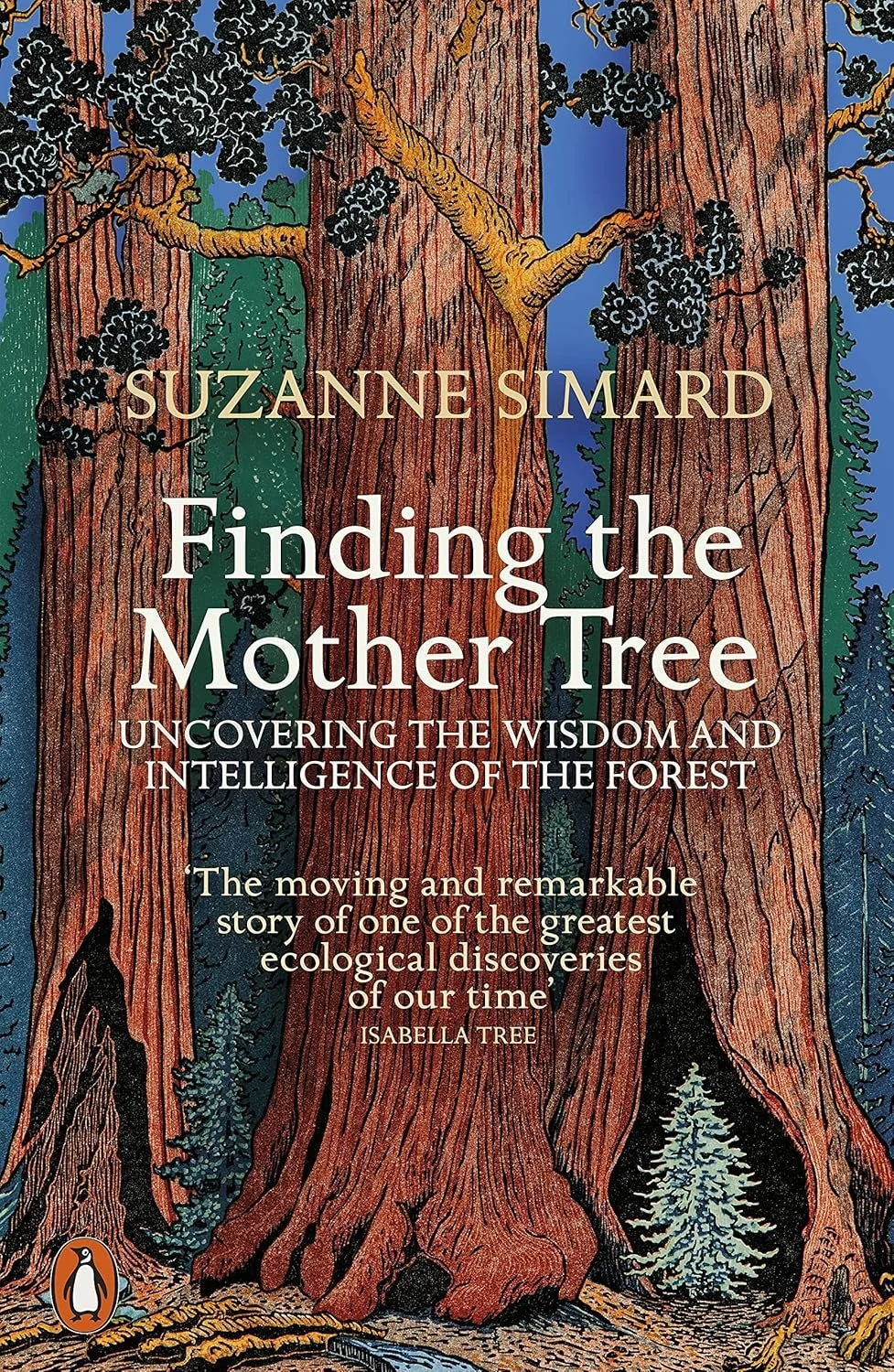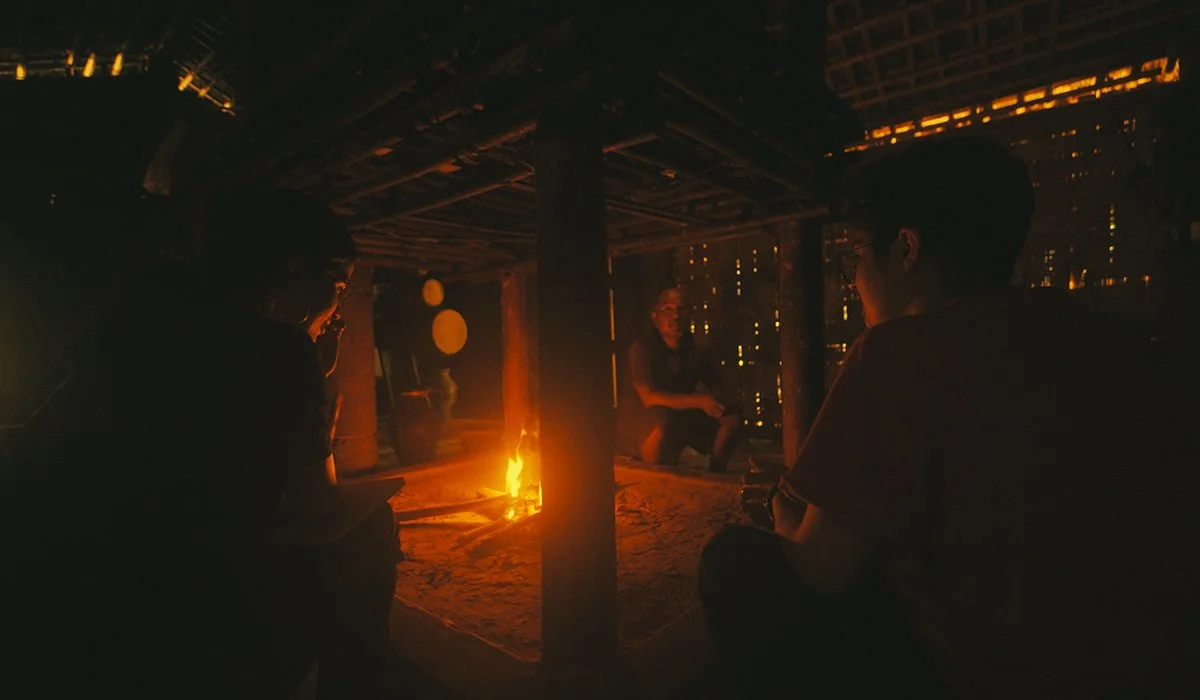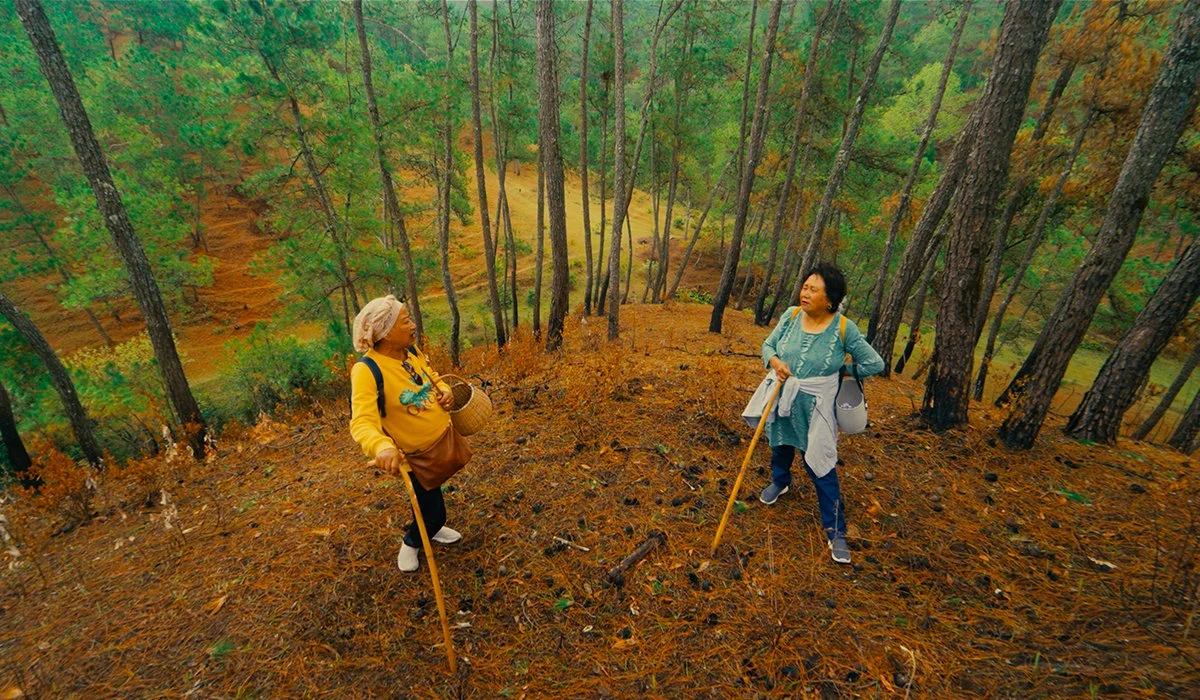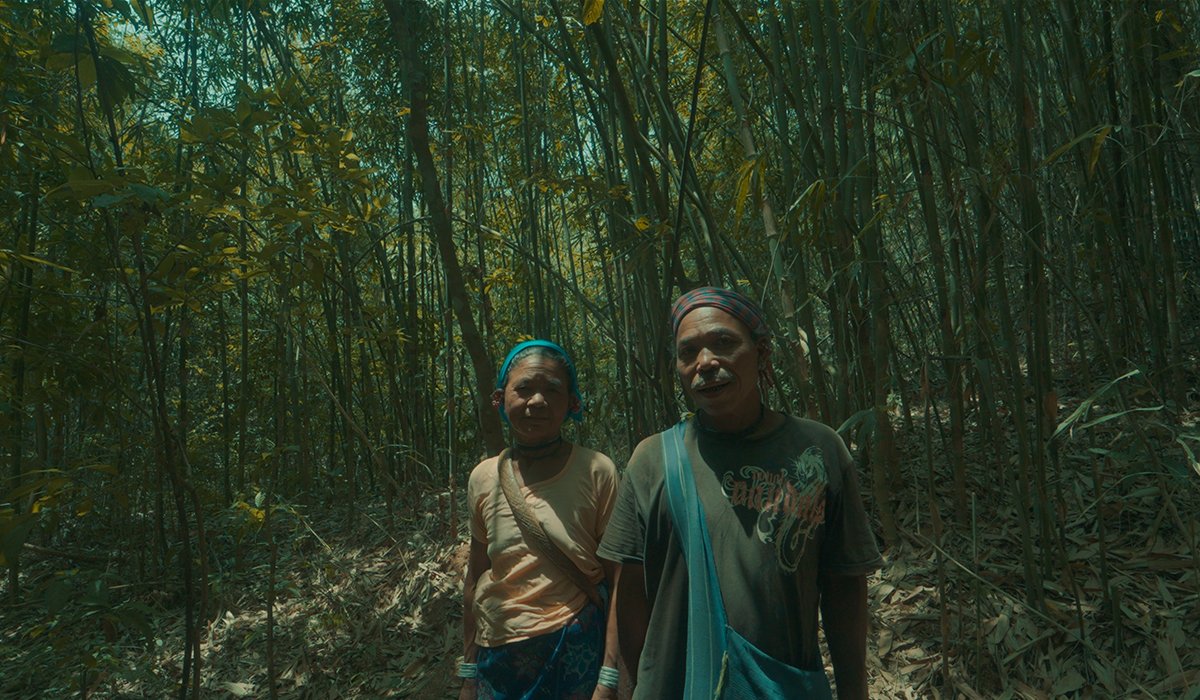How to sing to mushrooms
And find our way back to the earth
Any reason is a good reason to speak or sing to nature. And if you really keep your mind on guard when you step into a forest, you’ll notice they often do it first.
A leaf leans forward like it’s eager to tell you a secret. A patch of clover nods gently in agreement, like it’s been listening all along. A fern unfurls mid-sentence, like it’s been waiting to share something all morning. A mynah lets out a whistle, knowing full well that you are listening. A mushroom peeks out from the undergrowth like a child, daring you to spot it. Even the breeze gets in a word, rustling the leaves just so, as if clearing its throat before speaking.
On one hand, I have always looked at nature around me with wonder, but now, even more so. Tenfold more, in fact, ever since I learned about the mysterious, and highly intelligent fungal networks that run the show underground.
This shy and astonishing world opened up to me two years ago because of a delayed flight.
Having four hours to kill, I walked about shops before stopping by a Penguin kiosk. I browsed the nature section and reached out for a book with a beautiful giant Sequoia on the cover.
“The moving and remarkable story of one of the greatest ecological discoveries of our time,”
said the blurb on the cover. One of the greatest ecological discoveries? I was intrigued.
I started reading it with my third cup of coffee, and by the time my boarding call came, I had fallen deep into the forest floor. By the time I took my seat on the plane, I was dragged underground into an intelligent world of mycelium webs I didn’t know existed.
It was like stepping into Narnia, but instead of Professor Digory Kirke's house, it was the airport bookshop. And instead of a magical wardrobe, it was Suzanne Simard's Finding the Mother Tree.
The book changed the way I looked at the world around me. Every tree, every blade of grass, this weed, that weed, every suspicious-looking thing that I used to yank out, assuming they had no place in my vegetable beds. Turns out, most things, including weeds, grow for a reason. Their roots serve as the bed for a vast, intelligent mycelial network, spanning miles underground, carrying messages between the roots of trees, plants, and entire species, allowing them to speak to each other, share resources, and even heal the ones that need help.
I haven't yanked out anything from my veggie patches for a year and a half now and it's thriving better than it ever did.
Nothing is unnecessary in nature, as I have come to realize. The ground knows what she is doing.
Fungi, neither plant nor animal is a distinct third kingdom, overlooked for much of scientific history. And it is finally stepping into the light. Over the last couple of years, I have seen a visible rise in curiosity. More people are joining foraging walks, swapping notes on online forums, enrolling in identification courses, and actively trying to understand this strange, beautiful world. It’s exciting, because when something has lived under the radar for so long, the gap in research and understanding is immense. And what we need now are more people-led beginnings like this one.
Earlier this year, when Prithvi Kini from the Fungi Foundation told me about a film that was in the works, I was thrilled. Not only was it going to be India’s first ethnomycology documentary, it was also rooted in a place I care about. My step-grandmom’s home, Meghalaya. The short film, The Mushroom Keepers, is equal parts tender walk through the woods and bold, necessary archival work. Directed by Naveed Mulki and produced by the Fungi Foundation, is a tribute to the elders who have long understood the roles of fungi, as food, medicine, soil stewards, and spiritual allies.
I think the biggest leaps in science have happened when the scientific community approached local ecological knowledge with curiosity, without dismissing it as superstition or pseudo-science.
They may not give us ‘scientific’ answers, but they can damn well show us where to look.
With climate change, fungi species are disappearing faster than we can study, understand, or protect them. At this crucial point, one of the most important things we can do is collect and document the memories of the forest and its stewards. And The Mushroom Keepers do this beautifully.
The film follows two delightful women as they wander into the forest, like stepping into a beloved relative’s home after a long time. Calling out gently, announcing their return. Along the way, they speak and sing to the mushrooms with the fondness of those who’ve known each other forever.
For me, the most endearing part is the way they speak and sing to the mushrooms throughout their foraging hike. From the time they enter the forest, asking them "Where are you?", to the sweet "Ok bye now, we are leaving, grow well, ok?", and even when they reach home and cook, they sing and talk to the pot, thanking the mushrooms in gratitude and sweetly asking them not to poison anyone.
Meghalaya was chosen not just for its stunning landscapes and biodiversity, but for the deep-rooted traditions of its indigenous communities. In the Khasi and Garo Hills, knowledge on mushrooms is passed on orally. Like the prized Tit Tung or Dambongg, these are seasonal treats, and so much more - they are part of rituals, medicines, spiritual practices, and feasts that speak of a world where humans and forests are kin.
The film is part of the Fungi Foundation’s Elders Program, led in India by Malavika Bhatia and Prithvi Kini.
In their own words:
“Our Elders Program is rooted in the belief that ancestral fungal knowledge must be honoured, protected, and centered – not extracted or archived for distant audiences. This film was produced through deep, intentional relationships with the communities who hold this knowledge – people who live in active, reciprocal connection with their forests, fungi, and ancestors.
The elders who appear in the film did not merely participate in it – they led it. The Mushroom Keepers move away from conventional documentary approaches and instead center indigenous knowledge as vital, living, and deeply relevant to the ecological futures we must imagine and build together.”
Prithvi and Malavika’s journey to the land of clouds and their days spent learning with the locals are already beautifully captured in this Current Conservation article, which you should absolutely read.
Before its national and international release, the film held its first screenings on home turf - in Shillong, Tura, and Sadolpara, where elders and families watched their lives honoured on screen. These community premieres were powerful reminders that science and storytelling do not belong only in labs or conferences. They also belong in forests and kitchens, watched over a simmering pot of wild mushrooms.
The Mushroom Keepers is a love letter written patiently, to a world that has long gone unnoticed beneath our feet. In a time when deforestation and climate change is shifting the very rhythm of forests, this film opens up space for crucial conversations around biocultural diversity, indigenous knowledge, and anticolonial ecological futures. It reminds us that the people who have safeguarded the earth for centuries, must be at the centre of the policies that aim to protect what little wilderness we have left.
The forest remembers what we forget.
She often hums it back.
And this is how we find our way back.
By saying hello.
Asking a question.
Or singing her a song.
